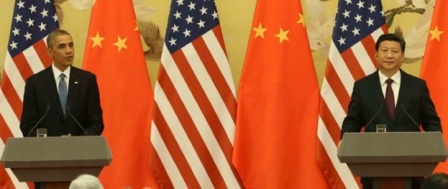New visa policy a ‘ turbo boost ‘ for China visits : NTA

New York : The recent agreement between the United States and China to extend the validity period for visas will elevate U.S. tourism—and the revenue and jobs the tourism industry generates—say leaders of the National Tour Association. The agreement, announced Nov. 10, lengthens the validity of tourist and business visas from one year to 10.
NTA, which pioneered group leisure travel from China into the United States, had advocated for the extension, the longest possible under U.S. law.
“With this change, Chinese travelers can now make repeat visits to the U.S. without going through the visa process again,” said Pam Inman, NTA President. “For many Chinese citizens, the United States is their dream destination, and any move to make travel here easier will lead to more visits.”
The visa extension is the latest in a series of steps the U.S. Department of Commerce has taken in the last few years to facilitate travel from China into the United States, including shortening the period of time it takes for Chinese citizens to obtain a visa. The visa extension is another giant step forward, according to Harry Chen, a tour operator in Millbrae, Calif., and a member of the NTA Board of Directors.
“This adds a turbo boost to the already growing demand of inbound groups from China,” Chen said. “Many of our tour group members from China had talked about how they love the experience of visiting the U.S. but weren’t sure if they would go through the process of applying for the visa again. Now they can more easily come here to explore the vast amounts of beauty America has to offer.”
For years, gateway cities such as New York, Las Vegas, Los Angeles and San Francisco have served as primary destinations that Chinese visitors focused on when the possibility of a return trip seemed remote. Now, with second and third visits more likely, tourists can expand their U.S. horizons, Inman said.
“We’ve heard from tour companies that Chinese travelers want to experience more of the United States,” Inman said. “The longer visa validity allows them to look beyond the gateways. It’s sure to benefit smaller cities and the nation’s heartland.”
China now ranks seventh in the number of annual visitors to the United States, having set records in 2013 for both arrivals (1.8 million) and spending ($21 billion). The China market alone supports more than 100,000 U.S. jobs. China is the fastest-growing source of travel into the United States, increasing from 320,000 visitors in 2006 to a projected 4.3 million in 2018.
According to Chen, who participates in NTA’s China Inbound Program, efforts to attract Chinese travelers to the United States have been hampered in the past by the visa application process in China, which can involve traveling to a city with a U.S. consulate and enduring an anxious waiting period, all for a one-year visa.
“A U.S.A. vacation might have been on their bucket list, but it was easier to obtain a visa for destinations in Europe, Asia or Africa,” he said. “The 10-year visa will give them a greater incentive for traveling to the United States.”
NTA’s work with the Chinese market through its China Inbound Program began in 2008, when the governments of both countries signed a memorandum of understanding opening group leisure travel from China to the United States. NTA was designated to maintain a list of U.S. tour operators registered to handle those groups.
Nov. 23, 2014















